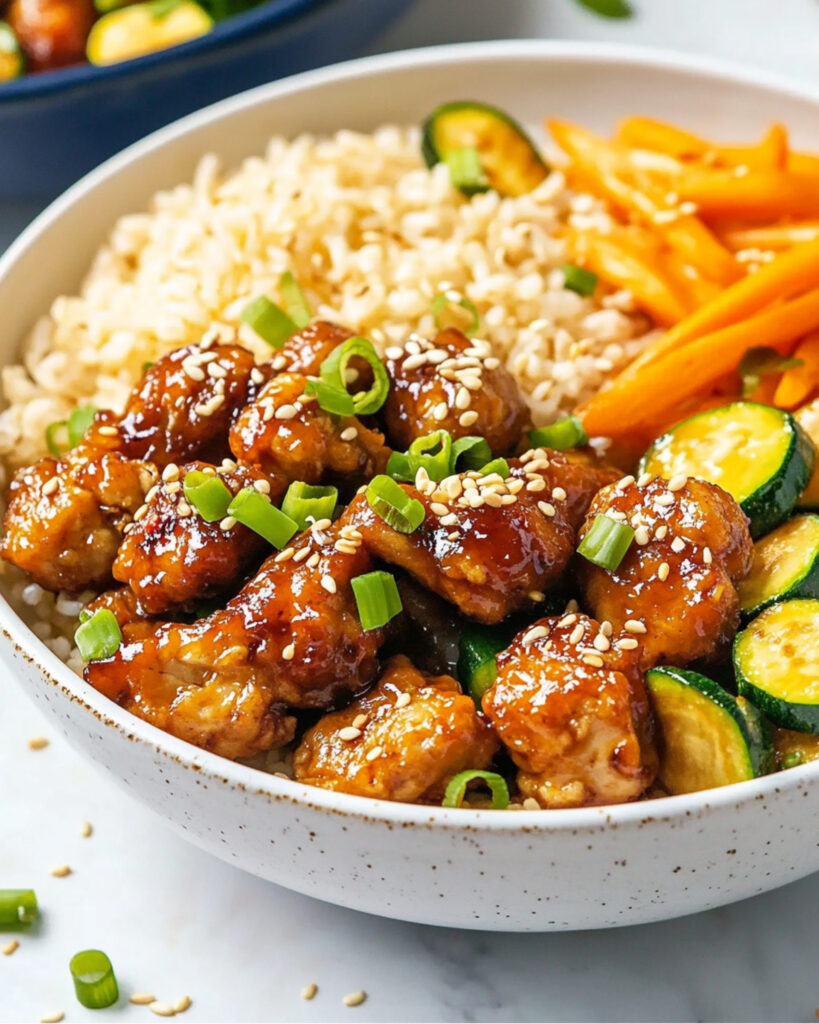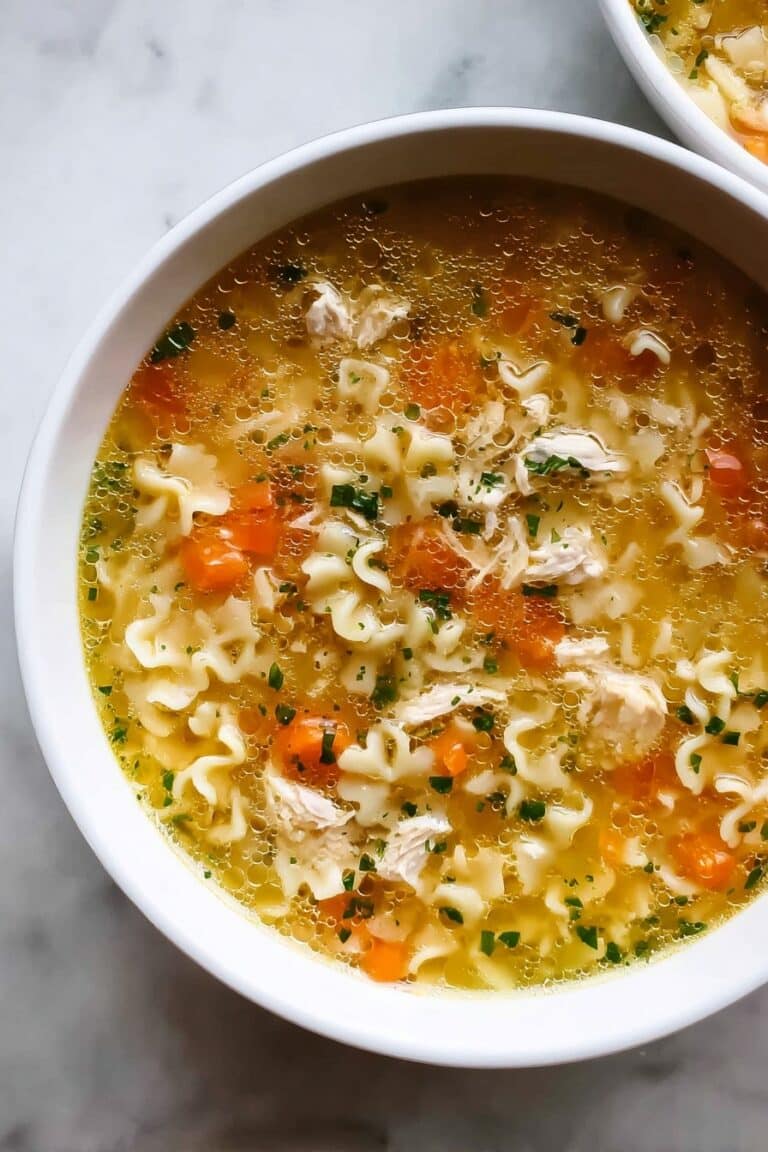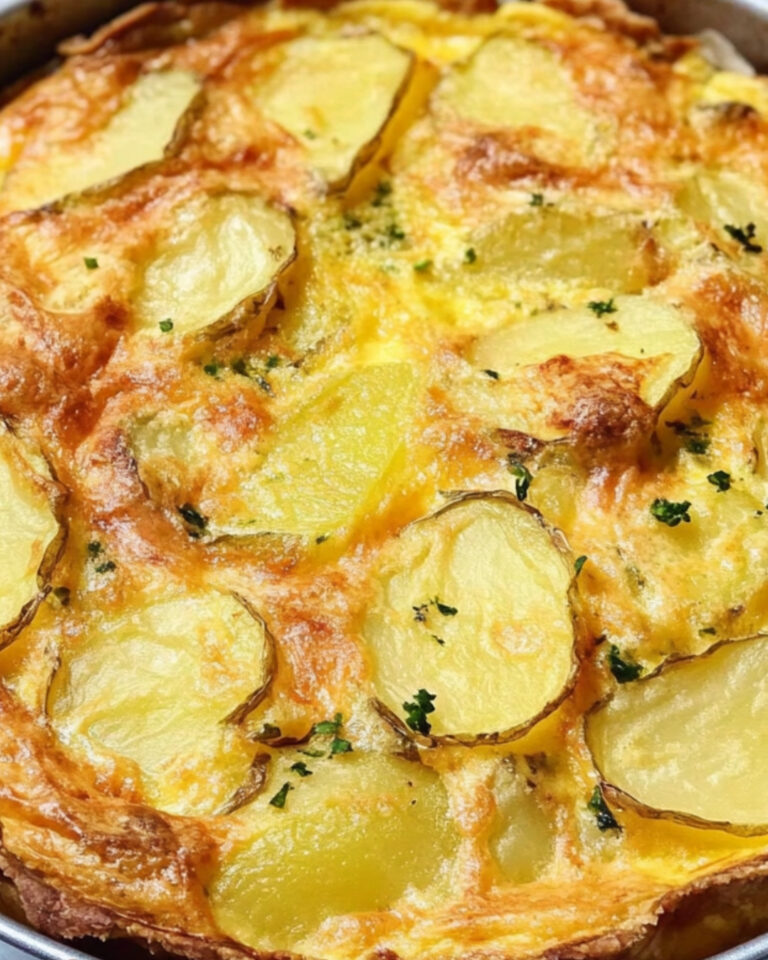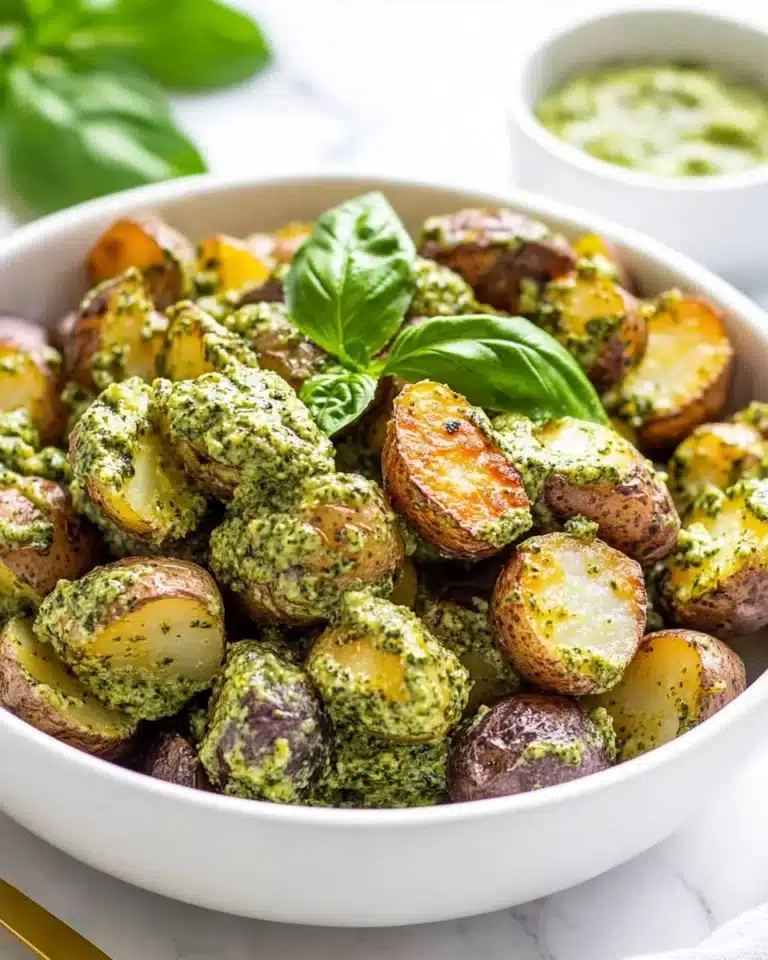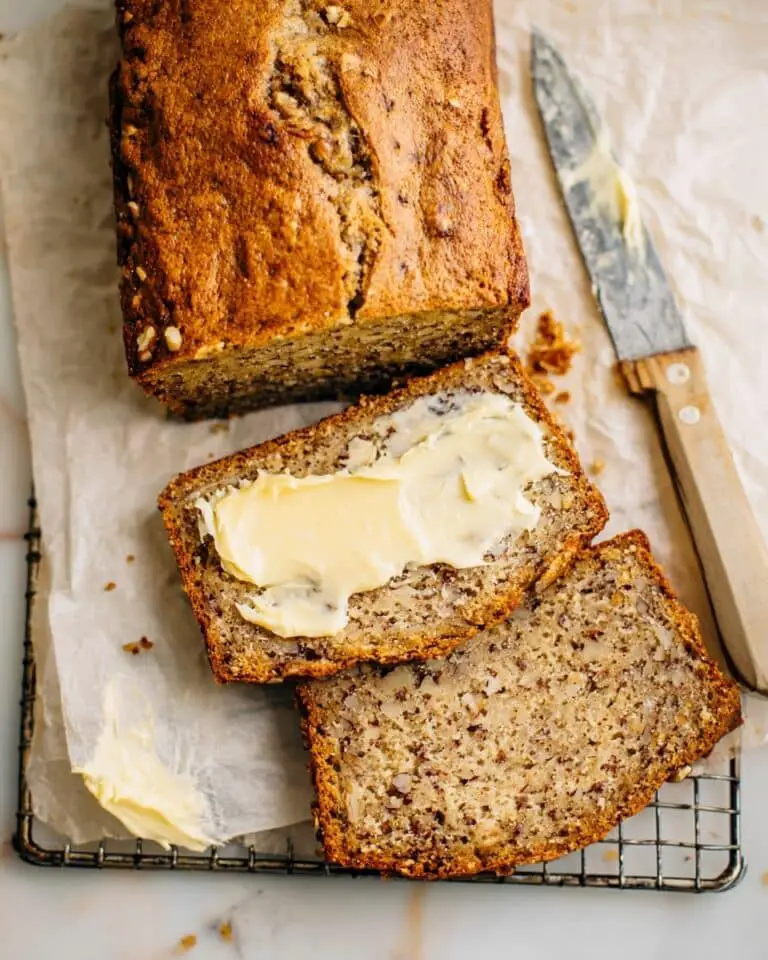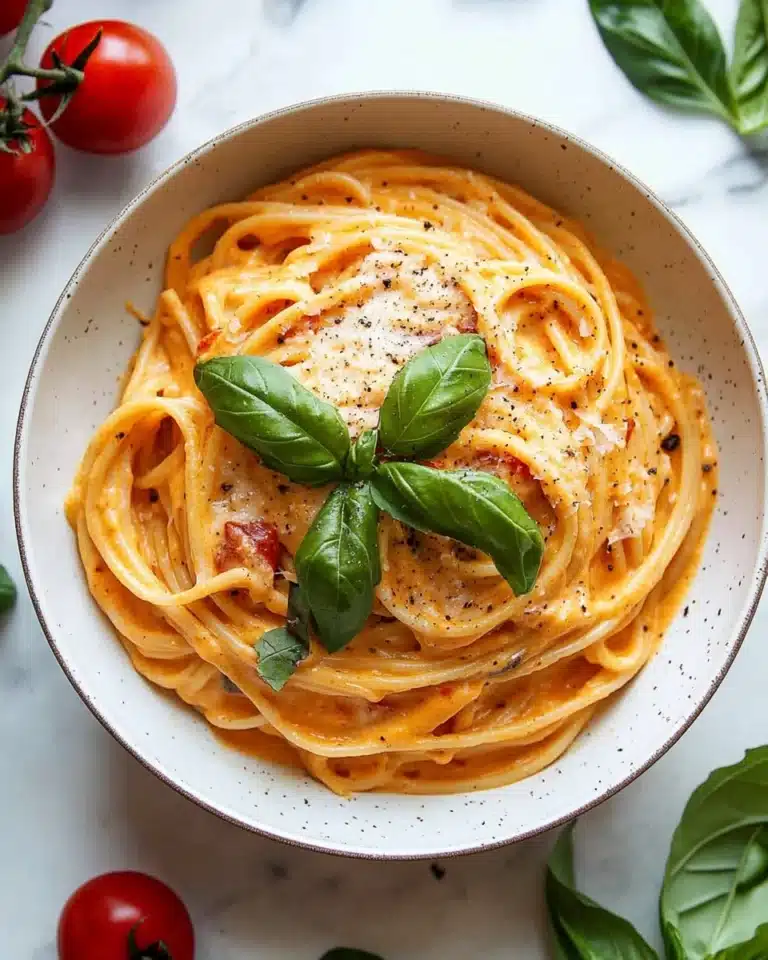This mouthwatering Hibachi Bowls recipe brings the excitement of Japanese steakhouse cooking right to your kitchen! Featuring juicy marinated chicken, perfectly sautéed vegetables, and a delicious mix of jasmine and cauliflower rice, these bowls deliver restaurant-quality flavor in just 30 minutes of active cooking time. The savory-sweet marinade infuses the chicken with incredible flavor, while the vegetable medley adds color, texture, and nutrition to every bite.
Pro Tips for Making the Recipe
- Restaurant Experience at Home: Capture all the flavors of your favorite hibachi restaurant without leaving your kitchen or spending a fortune.
- Customizable: Easily swap proteins and vegetables based on what you have on hand or what your family prefers.
- Balanced Meal: Each bowl delivers protein, vegetables, and carbs in one convenient package perfect for a complete dinner solution.
- Meal Prep Champion: These bowls store beautifully, making them ideal for preparing ahead for busy weekday lunches and dinners.
- Healthier Option: By controlling the ingredients yourself, you’re getting all the hibachi flavor with less oil and sodium than restaurant versions.
Ingredients You’ll Need
- Chicken: The star protein that soaks up all the delicious marinade flavors. Cut into bite-sized pieces for quick, even cooking.
- Coconut Aminos: A slightly sweeter, less salty alternative to soy sauce that adds umami depth to both the chicken and vegetables.
- Toasted Sesame Oil: Just a tablespoon adds that distinctive nutty flavor that’s essential for authentic hibachi taste.
- Garlic: Provides aromatic punch to the marinade don’t skimp here! Fresh is always best.
- Hoisin Sauce: This thick, fragrant sauce adds complexity and a touch of sweetness to the marinade.
- Ginger Paste: Brings bright, zingy warmth that balances the richer flavors in the dish.
- Vegetables: Zucchini, mushrooms, and carrots create a colorful, nutritious mix with different textures feel free to switch these up!
- Jasmine Rice: Quick-cooking variety speeds up the process while still delivering fluffy texture.
- Cauliflower Rice: Lightens up the dish and sneaks in extra vegetables without sacrificing the satisfaction of a rice bowl.
- Eggs: Creates that authentic hibachi fried rice experience when scrambled into the rice mixture.
- Green Onions: Adds fresh, mild onion flavor and beautiful color contrast.
- Dijon Mustard: A secret ingredient that adds tanginess and depth to the rice mixture.
Note: You’ll find the complete list of ingredients, along with their exact measurements, in the printable recipe card at the bottom of this post.
Variations
Protein Options
Easily substitute the chicken with:
- Thinly sliced steak for a beef hibachi experience
- Shrimp for a seafood twist (reduce cooking time to 3-4 minutes)
- Tofu for a vegetarian version (press well and use extra-firm)
Vegetable Swaps
The beauty of hibachi is its flexibility—try these vegetables instead:
- Broccoli florets
- Snow peas or sugar snap peas
- Bell peppers
- Bok choy
- Onion wedges
Sauce Adjustments
- Add a tablespoon of honey to the marinade for a sweeter profile
- Mix in some sriracha or sambal oelek for a spicier bowl
- Use regular soy sauce if you don’t have coconut aminos (but reduce the amount by 25% and consider adding a touch of honey)
How to Make Hibachi Bowls
Step 1: Marinate the Chicken
Mix the coconut aminos, sesame oil, minced garlic, hoisin sauce, ginger paste, salt, and pepper in a bowl. Add your chopped chicken, coat thoroughly, and refrigerate for at least an hour (overnight is even better!). Give the container a shake occasionally to ensure even marination.
Step 2: Prepare the Vegetables
Heat olive oil in a large wok or skillet over medium heat. Add your zucchini, mushrooms, and carrots, then sprinkle with coconut aminos, salt, and pepper. Sauté for 5-10 minutes until tender but still slightly crisp. Remove and set aside.
Step 3: Cook the Chicken
In the same pan, add a little more oil, then add your marinated chicken along with any remaining marinade. Sauté for 7-10 minutes until the chicken is golden brown and cooked through to 165°F. Remove and set aside.
Step 4: Prepare the Rice Mixture
Cook your jasmine rice according to package directions, and prepare the cauliflower rice as well. In your now-empty pan, combine both rices, then push the mixture to the sides to create a well in the center. Add your lightly beaten eggs to this center space and scramble until cooked through. Mix everything together.
Step 5: Season the Rice
Add coconut aminos, Dijon mustard, chopped green onions, salt, and pepper to the rice mixture. Stir well to incorporate all the flavors throughout the rice.
Step 6: Assemble Your Bowls
Layer about 1 cup of the rice mixture into each bowl, followed by 1/2 cup of vegetables and 3/4 cup of chicken. Garnish with your choice of toppings like sesame seeds, green onions, or a drizzle of sriracha.
Pro Tips for Making the Recipe
- Prep Ahead: Chop all vegetables and chicken the night before to make the cooking process much quicker.
- High Heat is Key: Use high heat when cooking both the vegetables and chicken to get that characteristic hibachi sear without overcooking.
- Don’t Crowd the Pan: Cook in batches if necessary to ensure browning rather than steaming your ingredients.
- Mise en Place: Have all ingredients ready and within reach before you start cooking hibachi-style cooking moves quickly!
- Quality Matters: Fresh garlic and ginger make a noticeable difference in the final flavor profile.
- Rice Texture: For authentic hibachi rice, make sure your rice is completely cooled before frying day-old rice works best.
How to Serve
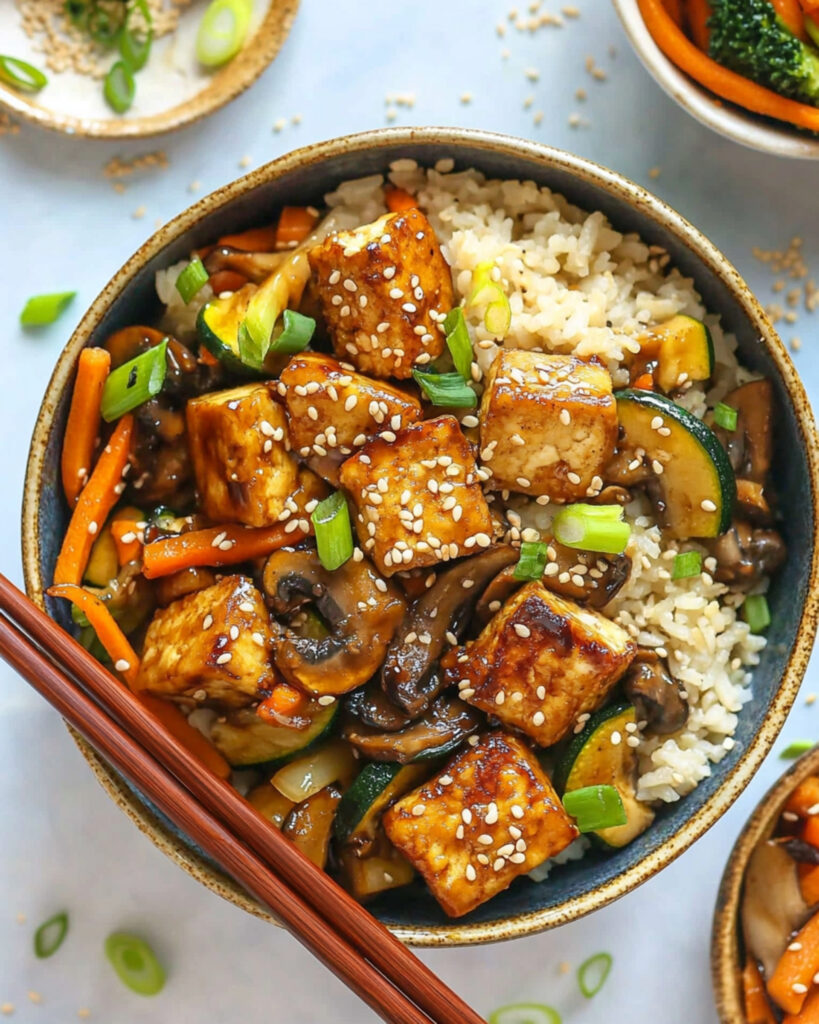
Family Style
For casual dining, place all components in separate serving bowls and let everyone build their own hibachi bowl to their preference.
Plated Presentation
For a more elegant presentation, use a 1-cup measuring cup to mold the rice into a perfect dome on each plate, then arrange the chicken and vegetables around it.
Accompaniments
Serve with small bowls of:
- Yum yum sauce or spicy mayo
- Extra coconut aminos
- Pickled ginger
- Wasabi paste
- Miso soup on the side
Make Ahead and Storage
Storing Leftovers
Store components separately in airtight containers in the refrigerator for up to 4 days. The chicken and vegetables keep best when stored apart from the rice.
Freezing
The chicken and vegetable components freeze beautifully for up to 3 months. Store in freezer-safe containers, leaving a bit of headspace for expansion. Rice can be frozen separately but may have a slight texture change when thawed.
Reheating
For best results, reheat the components separately:
- Microwave the rice with a sprinkle of water for 1-2 minutes, stirring halfway
- Reheat chicken and vegetables in a skillet with a splash of water or in the microwave until heated through (about 2 minutes)
- Combine after reheating for fresh-tasting hibachi bowls
FAQs
-
Can I use regular soy sauce instead of coconut aminos?
Absolutely! If using regular soy sauce, use about 3/4 of the amount called for since it’s saltier than coconut aminos. You might want to add a tiny bit of honey or sugar to compensate for coconut aminos’ natural sweetness.
-
How can I make this recipe completely gluten-free?
Make sure to use certified gluten-free hoisin sauce, as traditional versions contain wheat. Also verify that your coconut aminos are gluten-free (most are naturally). With these adjustments, the entire recipe becomes gluten-free!
-
Can I skip the cauliflower rice and just use all jasmine rice?
Definitely! Simply double the jasmine rice and water amounts for a traditional all-rice base. The cauliflower rice adds extra vegetables and reduces calories, but the recipe works perfectly with just jasmine rice too.
-
My vegetables got soggy instead of having that hibachi crispness. What went wrong?
Two likely culprits: overcrowding the pan or cooking on too low heat. Make sure your pan is very hot before adding vegetables, don’t stir too frequently, and cook in batches if needed to ensure proper browning instead of steaming.
Final Thoughts
These Hibachi Bowls bring all the excitement and flavor of Japanese steakhouse cooking into your home kitchen! They’re incredibly versatile, perfect for busy weeknights, and guaranteed to please even picky eaters. The combination of savory chicken, fresh vegetables, and flavorful rice creates a complete meal that feels special while being surprisingly easy to prepare. Give them a try this week I bet they’ll quickly become a family favorite in your regular dinner rotation!
Print
Hibachi Bowls Recipe
- Prep Time: 10 minutes
- Cook Time: 20 minutes
- Total Time: 30 minutes
- Yield: 6 servings
- Category: Main-course
- Method: Stovetop
- Cuisine: Asian-inspired
- Diet: Gluten Free
Description
This Hibachi Bowls recipe is a delightful and simple homemade version of a classic restaurant favorite. It combines juicy marinated chicken, sautéed vegetables, and flavorful rice for a healthy, customizable meal that’s perfect for weeknights.
Ingredients
Hibachi Chicken
- 2 lbs. boneless skinless chicken breasts, chopped into bite-sized pieces
- 1/4 cup coconut aminos
- 1 Tbsp. toasted sesame oil
- 4-5 cloves garlic, roughly minced
- 2 Tbsp. hoisin sauce
- 1 tsp. ginger paste
- Salt and black pepper, for cooking
- 1/2 Tbsp. olive oil, for cooking
For the Vegetables
- 1/2 Tbsp. olive oil
- 1 Tbsp. coconut aminos
- 2 medium zucchini, chopped (about 3 cups)
- 8 oz. sliced crimini mushrooms
- 1 cup carrot chips (100g)
- Salt and black pepper, to taste
For the Rice
- 2 cups Jasmine Minute Rice, dry (192g)
- 2 cups water
- 10 oz. frozen riced cauliflower, cooked
- 2 Tbsp. coconut aminos
- 1 tsp. Dijon mustard
- 2 eggs, lightly scrambled
- 1/2 tsp. salt
- Black pepper, to taste
- 4 green onions, chopped
Optional Toppings
- Spicy mustard
- Toasted sesame seeds
- Red pepper flakes
- Chopped green onions
- Extra coconut aminos
Instructions
- Marinate the Chicken: Add coconut aminos, sesame oil, garlic, hoisin sauce, ginger, salt, and pepper to a bowl or sealable bag. Mix to combine, then add the chopped chicken and coat well. Marinate in the refrigerator for at least one hour or overnight, shaking occasionally to ensure even coverage.
- Cook the Vegetables: Heat ½ Tbsp. olive oil in a wok or large skillet. Add zucchini, mushrooms, and carrots, then top with coconut aminos, salt, and pepper. Sauté over medium heat for 5-10 minutes until fork-tender. Remove the veggies and set aside.
- Cook the Chicken: Using the same pan, heat ½ Tbsp. olive oil and add the marinated chicken along with any remaining sauce. Sauté for 7-10 minutes, ensuring the chicken is browned and fully cooked (internal temperature of 165°F).
- Prepare the Rice: While cooking the vegetables and chicken, microwave the dry Jasmine rice with 2 cups of water for 8 minutes or as per package directions. Separately, cook the cauliflower rice according to its package instructions. Once cooked, combine the rice and cauliflower rice in the same pan you used earlier. Push the rice to the sides to create a hole in the center, spray with nonstick spray, and add lightly scrambled eggs. Cook the eggs, then mix them into the rice alongside coconut aminos, Dijon mustard, green onions, salt, and pepper.
- Assemble the Bowls: Divide into approximately 135 grams (1 cup loosely packed) of rice, 100 grams (½ cup) of vegetables, and 130 grams (¾ cup) of chicken per bowl. Add optional toppings like sesame seeds, spicy mustard, or sriracha before serving.
Notes
- Nutritional information is an estimate and may vary with substitutions.
- If you don’t want to assemble individual bowls, add the vegetables back to the chicken after cooking and serve over rice.
- You can substitute the chicken with steak or any preferred meat.
- Swap the vegetables with any leftovers, garden-fresh options, or your favorites.
Nutrition
- Serving Size: 1 serving (without optional toppings)
- Calories: 300
- Sugar: 4g
- Sodium: 820mg
- Fat: 8g
- Saturated Fat: 2g
- Unsaturated Fat: 6g
- Trans Fat: 0g
- Carbohydrates: 35g
- Fiber: 3g
- Protein: 25g
- Cholesterol: 120mg


